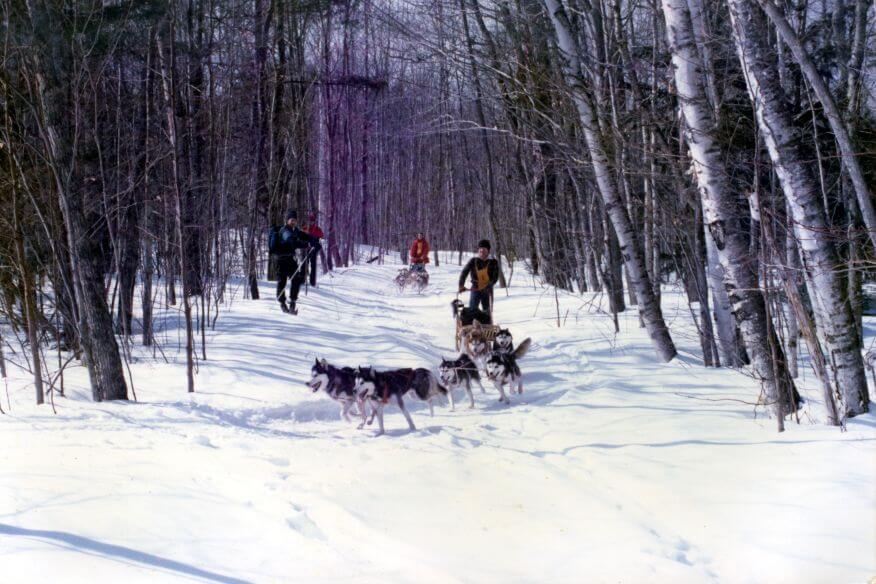Interview with Working Group Judge Bob Eisele
I have been involved in the sport of purebred dogs for 42 years. Over the twenty years of judging Siberian Huskies, my original breed, I have had the privilege to judge Best of Breed at the Siberian National twice, in 2007 and again in 2021. I have been fortunate enough to have experienced and judged the Siberian internationally in South Korea, Italy, France, Spain, and in The Netherlands.
My interest in Siberians has gone beyond the conformation ring. I have dabbled in obedience, putting a title on one of my Siberians. I have 12 Sled Dog degrees on the dogs that not only ran on my mid-distance team but were also shown in conformation as well. Siberians are true dual-purpose animals. I raced my team throughout New England and Canada, winning a 30-mile race in Maine. Running those same dogs that I showed in the conformation ring allowed me to be awarded the Siberian Husky Club of America’s Working/Showing trophy.
I have represented the Suffolk County Kennel Club as their delegate to the AKC for over nineteen years and was Show Chair or Assistant Chair for eighteen years. In 2012, I had the honor of receiving the AKC Community Achievement Award.
I am currently the President and one of the founding members of the Big Apple Working Group Club and was a founding member and Chair of the SHC of Greater NY rescue.
On the national club level, I was Treasurer for the Siberian Husky Club of America for twelve years.
I am a member of the Siberian Husky Club of America, Suffolk County Kennel Club, Big Apple Working Group Club, Big Apple Sporting Society, Morris & Essex, and the Eastern Steward Club. I am also a member of the Nova Scotia Duck Tolling Club of America and the Schipperke Club of America, the other breeds that I own.
I currently judge the Working, Sporting, and Non-Sporting Groups, six Herding breeds, and I am a UKC All-Breed Judge.
How many years in dogs? How many years as a judge?
Bob Eisele: I have been involved in the sport of purebred dogs for 42 years, judging for over 20 years.
What is my original breed? What is/was my kennel name?
Bob Eisele: My original breed is the Siberian Husky. My kennel name is ALYA.
Any performance or parent club titles?
Bob Eisele: Bob Eisele: Siberians are not the easiest of breeds to attain an obedience title. I was lucky enough to have had one that, despite my handling, did get a title; our efforts were more toward the sledding ability of the breed. We raised and bred the first 12 Sled Dog titled dogs in New York.
What are the qualities I most admire in the Working breeds?
Bob Eisele: Their desire to perform their job. You really get to see that desire after you have stood on the back of a sled for 14 hours.
Have I judged any Working Group Specialties?
Bob Eisele: Beyond judging the breed at the Siberian National twice and Siberian Specialties internationally, I have judged specialties for numerous Working breed’s Regional Specialties.
Do I find that size, proportion, and substance are correct in most Working breeds?
Bob Eisele: They are the first things I look for when judging any breed. In Working breeds, size, proportion, and substance directly relate to their ability to do their job.
I do find that some judges don’t consider the full range of size, proportion, and substance in a breed standard. Instead, they have a personal preference toward one range or another, ignoring an excellent exhibit just because it does not meet those preferences.
I am concerned about proper angulation; it’s gotten to the point in some breeds where straight fronts have become acceptable. Two-thirds of a dog’s body weight sits over the front assembly. How can a Working Dog do its job without the correct front angulation?
Is breed-specific presentation important to me as a judge?
Bob Eisele: Yes, it definitely is important. Having limited time to examine each dog, presenting your exhibit in the most positive and breed-specific light will show off its attributes and allow the judge to view those quickly.
What are my thoughts on cropping/docking the Working breeds?
Bob Eisele: I am not opposed to appropriate cropping/docking of Working breeds, particularly when it directly correlates to the function and history of a breed.
Are the Working breeds in good shape overall? Any concerns?
Bob Eisele: I am concerned that we are losing the desire that Working breeds have. Many of the Working breeds no longer have a job. If it weren’t for recreational sledding, Siberian’s would just be another generic show dog. I am also concerned that judges don’t understand the size and proportion of a Siberian Husky and how it directly affects their ability to perform its job. Too many times, I have heard a judge say that an exhibit was “too much dog for them.” I tell those judges, next time they judge, to look down their lineup and ask themselves, “If I was stuck 60 miles out in the wilderness, with temperatures 20 to 30 degrees below zero, which ones could get me home?” As long as they are within the standard, those are your winners.
In my opinion, how do today’s exhibits compare with the Working Dogs of the past?
Bob Eisele: This is not really a fair question. In past years, entries were significantly greater. With those numbers, you were bound to find a good dog. Today, every once in a while, you come across a good dog, and hopefully, someone finds it and rewards it accordingly. That’s what has made judging today so difficult; there are just not enough dogs of a breed being shown, making it more difficult to find that really good dog.
Why do I think the Working breeds are so admired as family companions?
Bob Eisele: Working breeds do it all; security, service, and support, without being needed.
Just for laughs, do I have a funny story I can share about my experiences judging the Working Group?
Bob Eisele: During one of my first Group assignments, I was examining the bite of a Great Dane, when all of a sudden he let out the most enormous sneeze. I so overreacted it was embarrassing.









